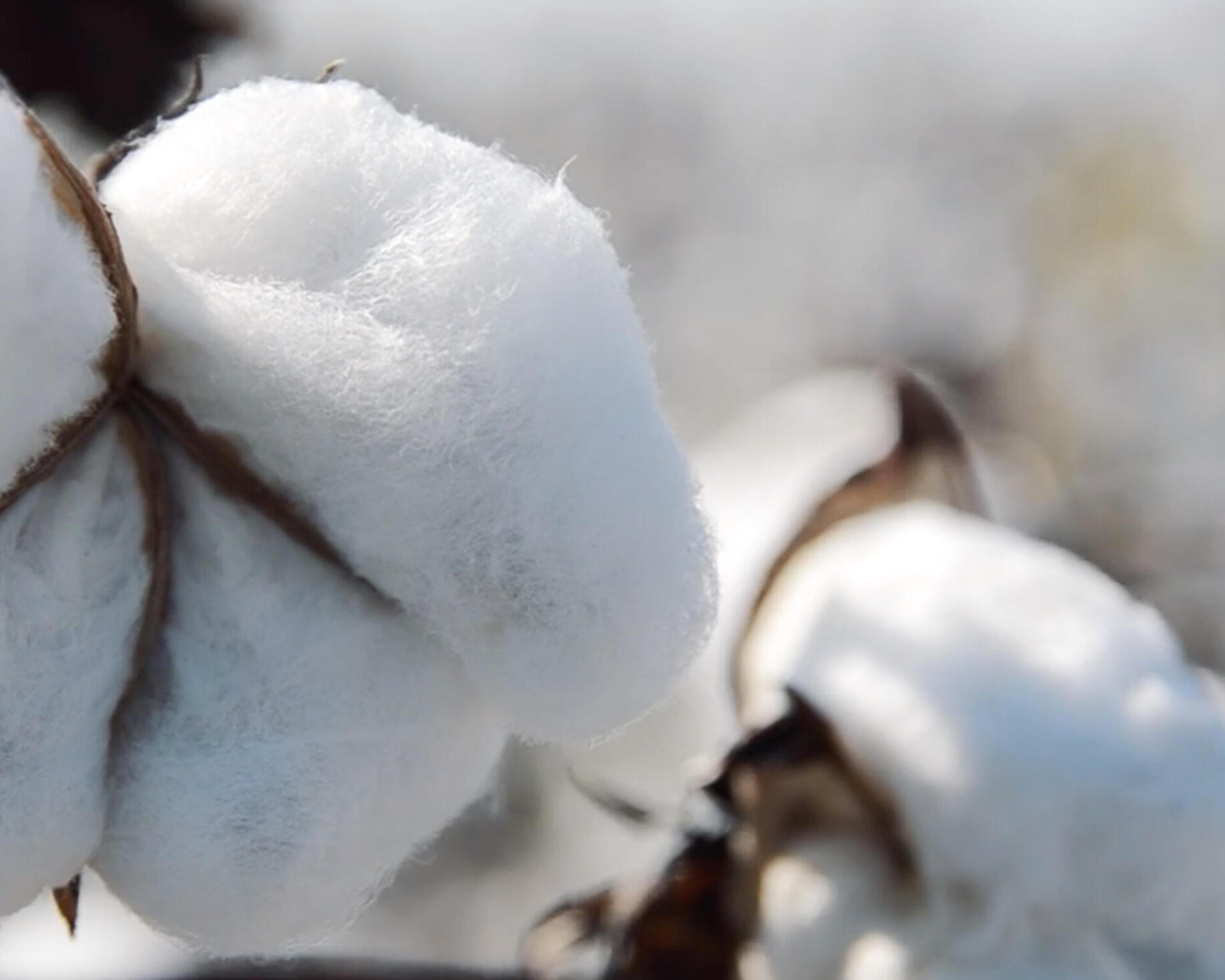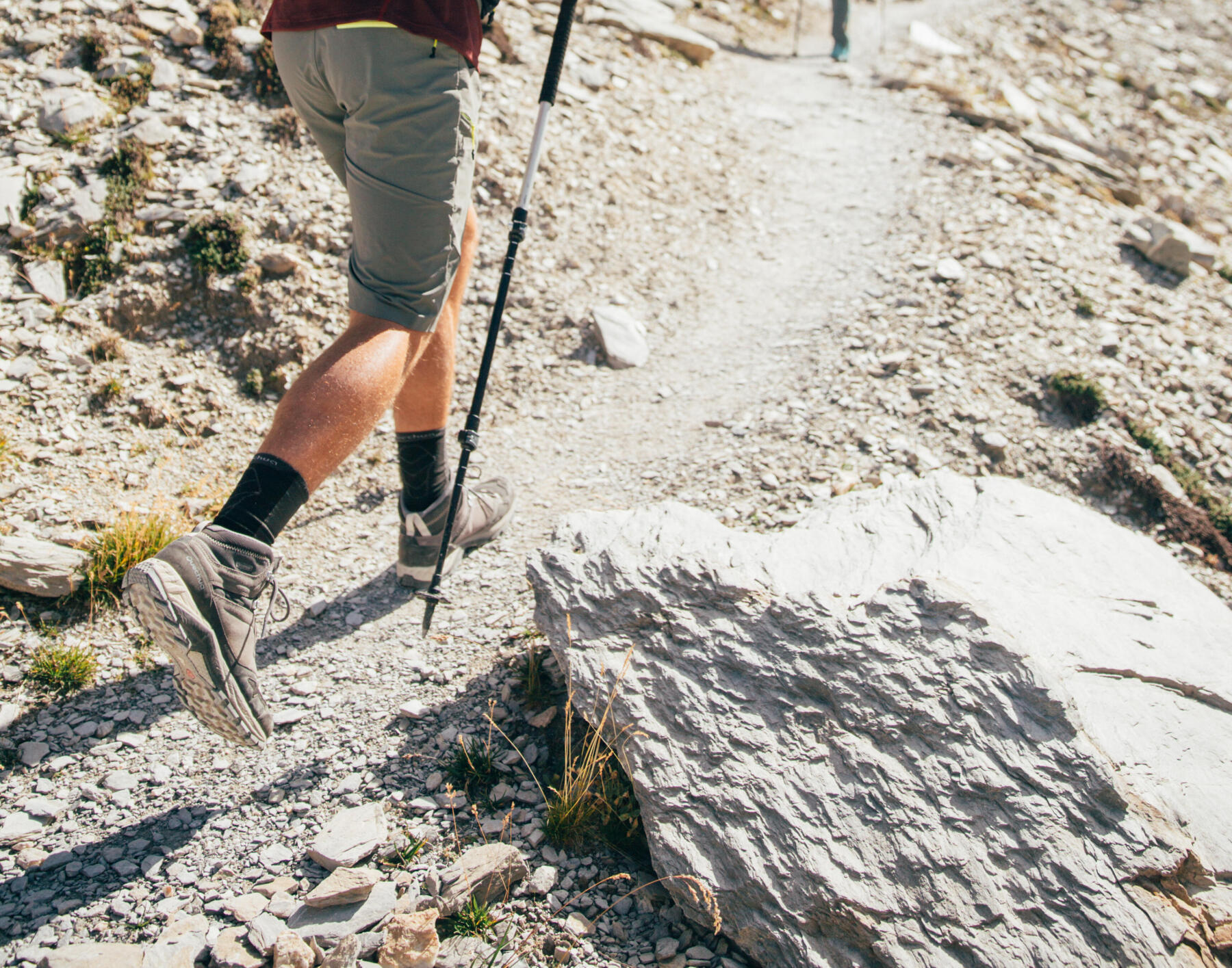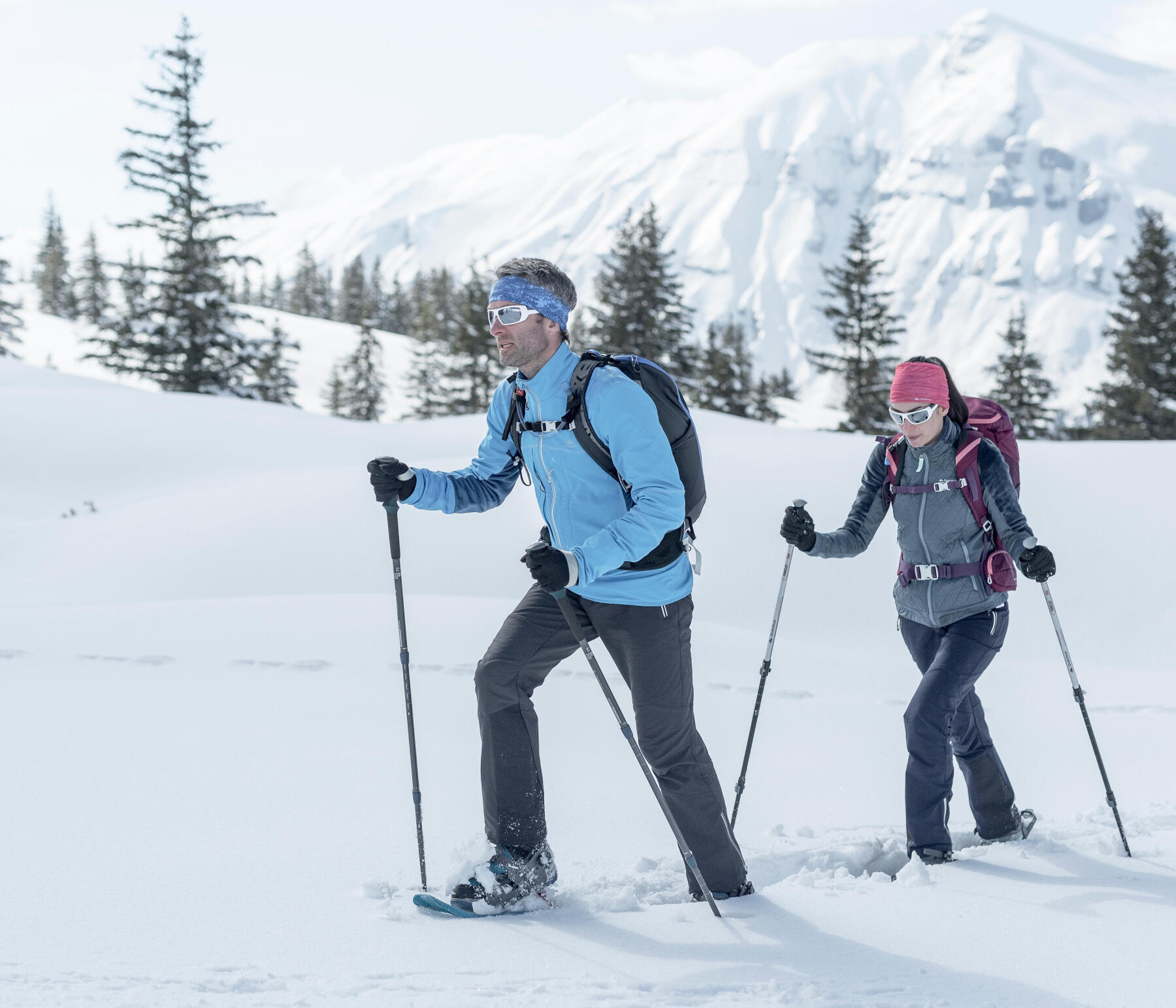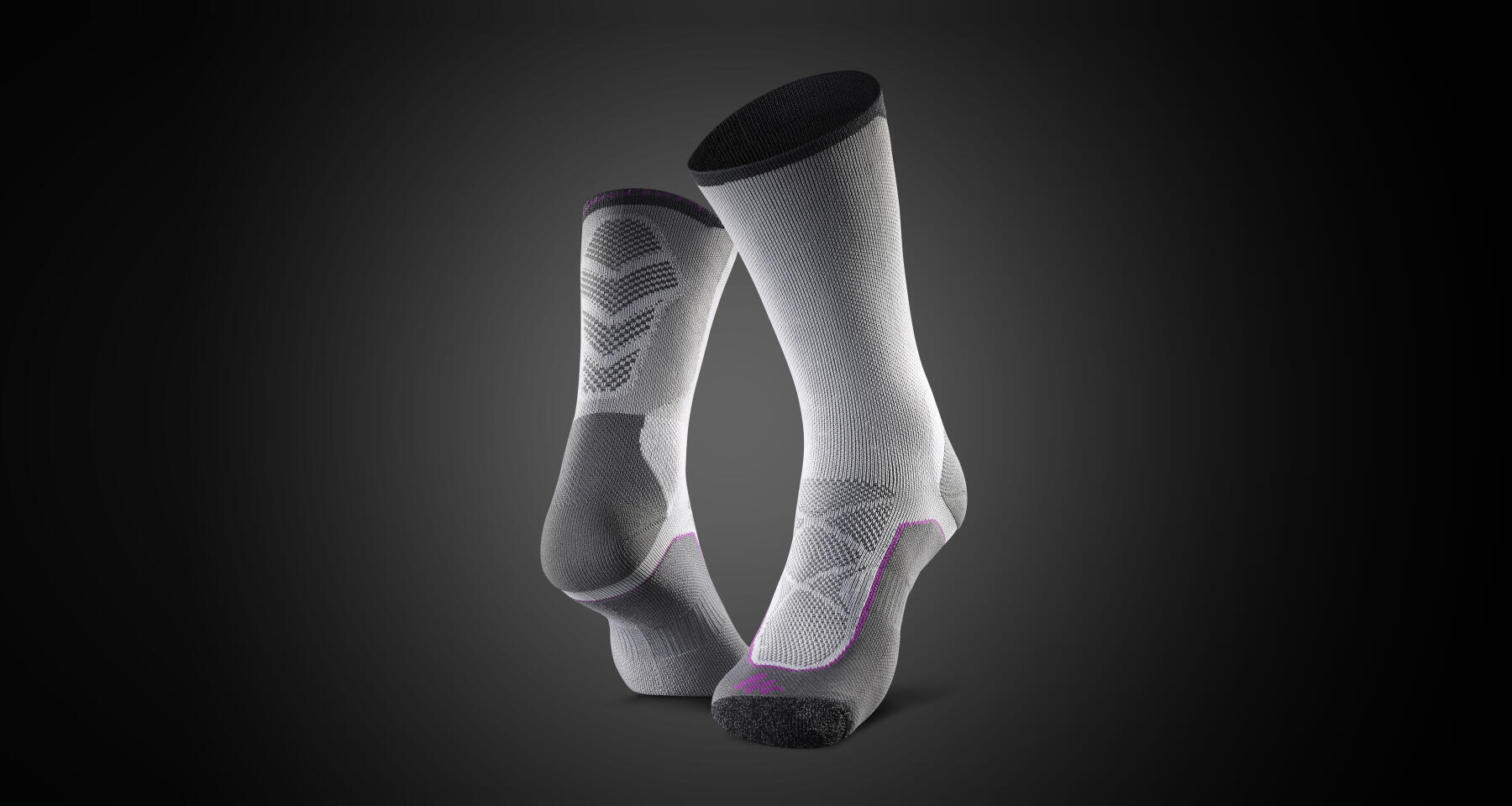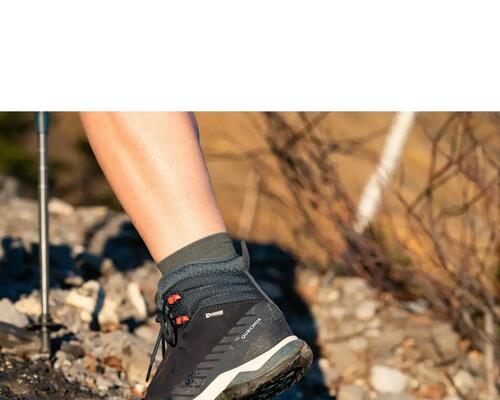1. Choice of material
Hiking socks can be designed with different materials, each with their own specific properties.
Depending on your level of ability, but more importantly, your needs, you will opt for one material rather than another.
Cotton, for example, has the benefit of being comfortable.
On the other hand, it does not wick away moisture and dries slowly, which may cause blisters more easily on a long outing.
That's why it is recommended for short hikes or walks.
Synthetic materials are quite strong and durable.
They have the big advantage of wicking away perspiration well.
A good compromise for slightly longer hikes.
Elastane provides good support and conforms to the shape of the foot, which prevents creases from forming.
Cordura, which is included in the composition of some socks, is known for its resistance to tearing and abrasion.
Ideal for a long outing or trek.
Merino wool is comfortable, limits odours and provides good insulation from the cold.
In addition, given its thermoregulatory properties, it also insulates from heat. It is also anti-bacterial, but does not wick away perspiration very well.
This is why it is often mixed with synthetic materials in our socks.
A QUICK LOOK AT OUR ENVIRONMENTAL APPROACH :
In order to improve our carbon footprint, 80% of our range of socks is eco-designed.

